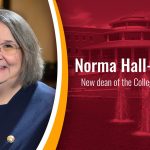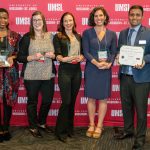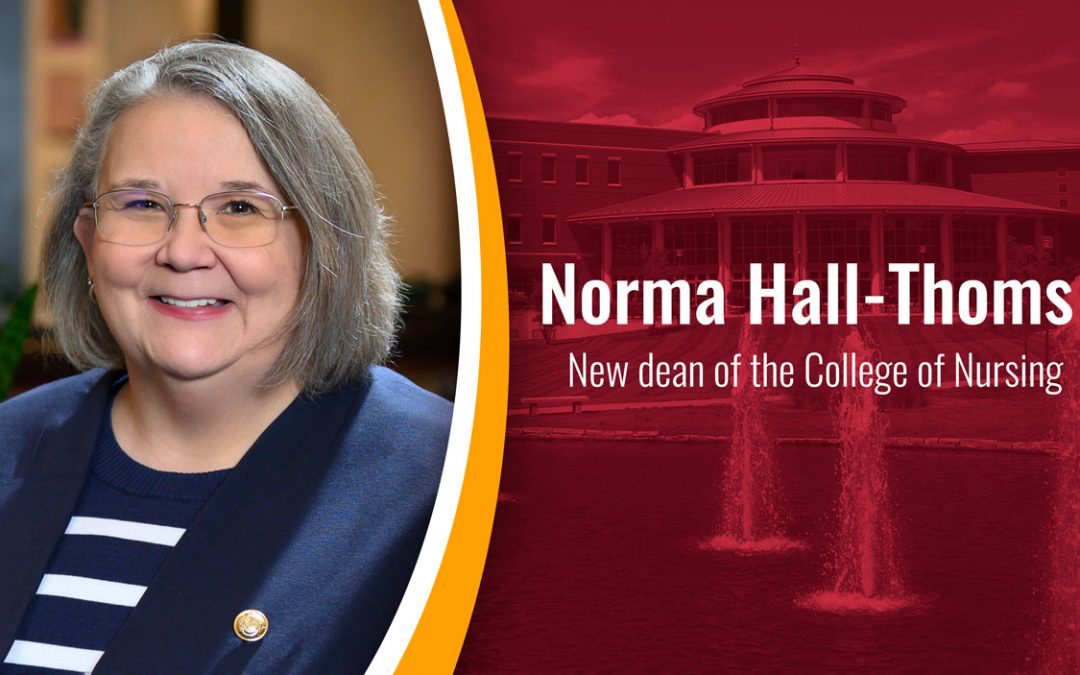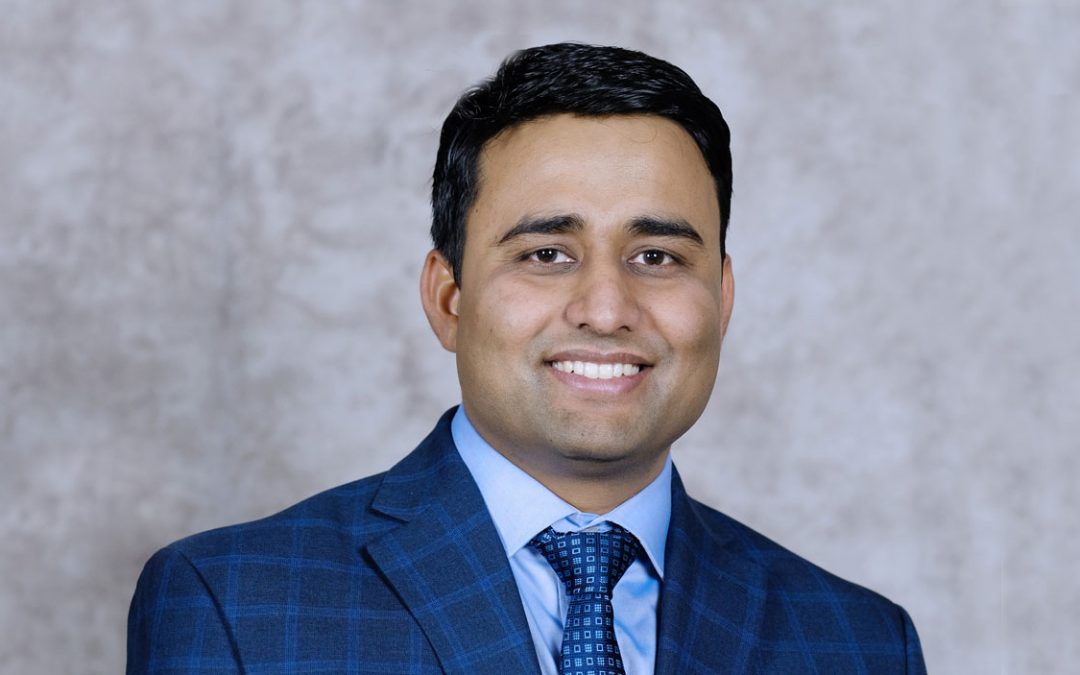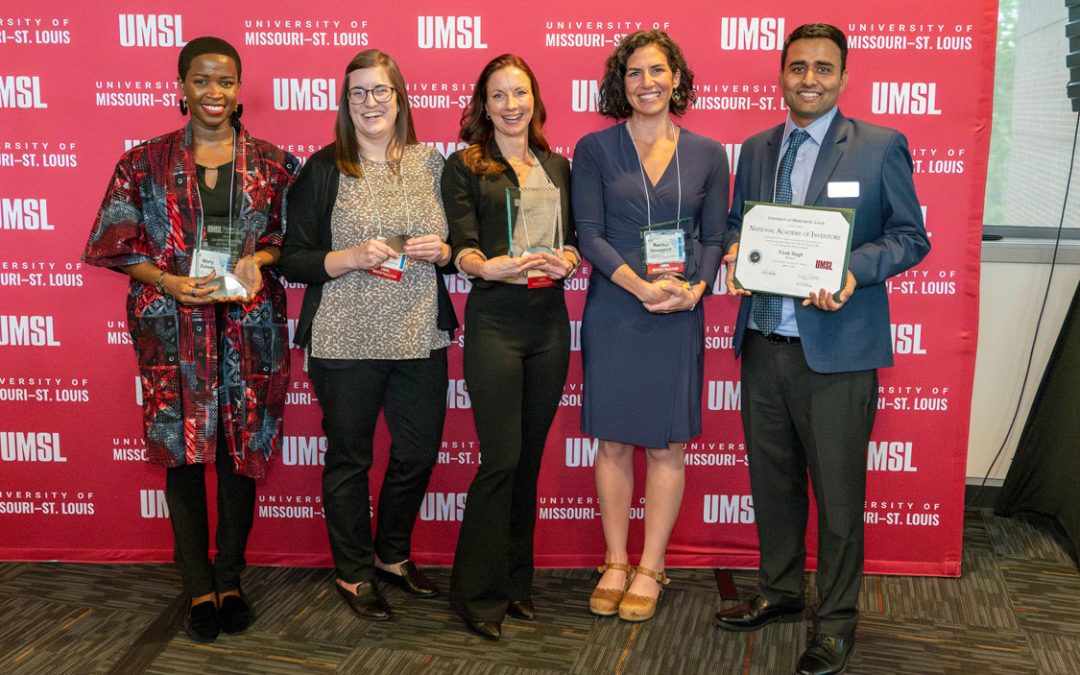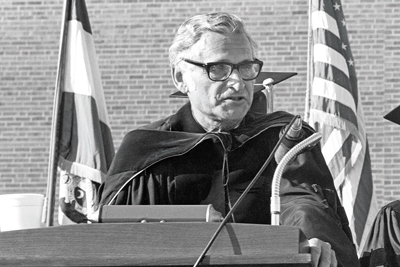
Arnold Grobman, who served as UMSL's chancellor from 1975 to 1985, died July 8 in Gainesville, Fla., at the age of 94.
Arnold Grobman, a former chancellor of the University of Missouri–St. Louis who in 1975 expanded the young institution’s academic mission to include the colleges of optometry and nursing, died July 8 in Gainesville, Fla. He was 94. A cause of death was not available.
Grobman served as UMSL’s chancellor from 1975 to 1985. An advocate of the “urban university,” he convinced the faculty at the time that UMSL had to reach out to the community, and the community would in turn reach out to them. The term, urban university, was used to describe an institution of higher education that was socially involved and served as a resource for the citizens of a city or region.
“Arnold Grobman helped shape the university we have become,” UMSL Chancellor Tom George said. “He had a tough fight to bring the nursing and optometry programs here, but he never gave up. He was an internationally renowned scientist whom I had the pleasure of meeting several years ago.”
Blanche Touhill, a former chancellor and UMSL historian, was a faculty member when Grobman arrived at UMSL in 1975.
“Arnold was determined to create that urban university,” Touhill said. “He was dedicated to the non-traditional, place-bound students, the students who were working, had families, maybe a home. They were the students who started college somewhere else and then took six or seven years to finish. He would say, ‘If they want a university education, then we’re the ones to give it to them.’”
During Grobman’s tenure, the university purchased the buildings and land that made up the Marillac College campus, creating UMSL’s south campus and instituted the Chancellor’s Report to the Community, an annual luncheon still practiced.
Grobman was born and raised in Newark, N.J. He earned his bachelor’s degree at the University of Michigan in Ann Arbor and a master’s degree and doctorate in zoology at the University of Rochester in New York.
He held numerous positions over his long and distinguished career, including a researcher studying the effects of radioactivity for the Manhattan Project in Oak Ridge, Tenn. He served on the faculty of the University of Florida in Gainesville. He also served as director of the Florida State Museum from 1952-1959, laying the foundation for its development as a major university research museum.
In 1959, he became the founding director of the Biological Sciences Curriculum Study in Boulder, Col., a group developing secondary school biology textbooks promoting the teaching of evolution and lab fieldwork.
He was the author of several books, including “Our Atomic Heritage,” and “Urban State Universities.” He authored dozens of scientific articles, many of them focusing on reptiles. The salamander Plethodon grobmani was named after him.
Touhill recalled that Grobman had to travel often to Columbia, Mo., or Jefferson City, Mo., and would take the back roads on his way home. A noted herpetologist, he was always on the lookout for frogs, toads or turtles along the road.
“He’d pick them up and bring them back to campus, and put some of them in the pond behind the chancellor’s residence and others in Bugg Lake,” Touhill said. “When he left, he gave some of the more interesting ones to the Saint Louis Zoo.”
Grobman is survived by his son, Marc Grobman of Fanwood, N.J., and daughter, Beth Grobman and grandson, David Burruss of San Jose, Cal. His wife of many years, Hulda, preceded him in death.
More can be read about Grobman in the St. Louis Beacon and the St. Louis Post-Dispatch.


